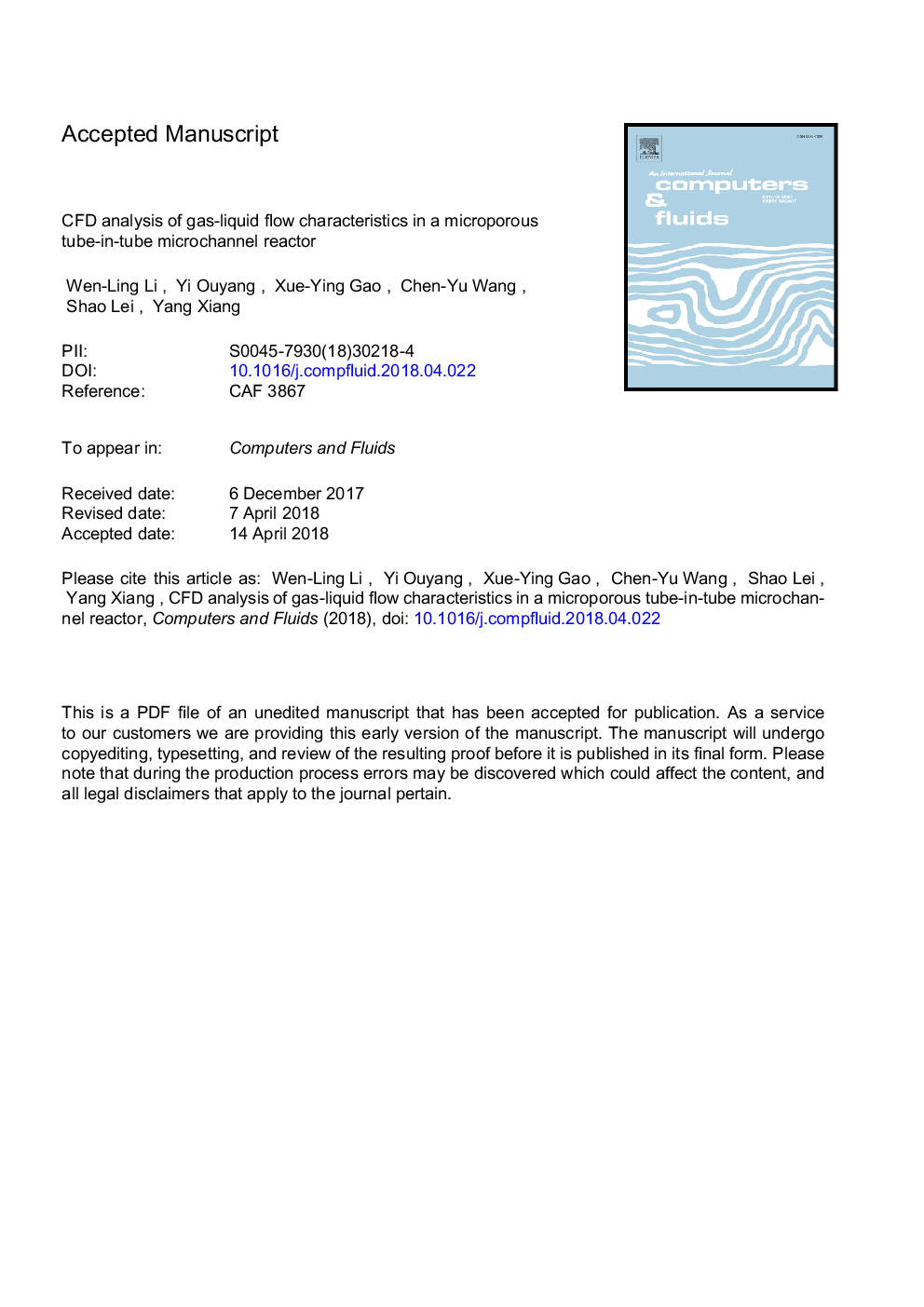| Article ID | Journal | Published Year | Pages | File Type |
|---|---|---|---|---|
| 7155987 | Computers & Fluids | 2018 | 35 Pages |
Abstract
As a novel micro-reactor, the microporous tube-in-tube microchannel reactor (MTMCR) has been applied to some processes such as gas absorption, preparation of nanomaterials for the past few years. In this work, the three-dimension simulations in the microporous tube-in-tube microchannel reactor (MTMCR) have been carried out via computational fluid dynamics (CFD) to study the influence of various parameters on gas-liquid flow behaviors, and the coupled level set and volume of fluid method was applied to capture the gas-liquid interface. The liquid distribution in MTMCR by CFD was basically in agreement with the results of visualization experiment and the time-averaged pressure drops were in agreement with literature data within deviation of ±5%. The simulation results showed that the interfacial area and pressure drop increased with the increase of gas or liquid flow rates. The smaller micropores size and annular channel width led to a larger interfacial area and higher pressure drop. Three typical liquid flow patterns were revealed: droplet flow, elongated-droplet flow and churn flow, and the interfacial areas ranged from 976 to 9172 m2/m3 under operating conditions. This work indicated the great potential of the MTMCR for intensifying the gas-liquid mass transfer process, and provided theoretical basis of the MTMCR for practical applications.
Keywords
Related Topics
Physical Sciences and Engineering
Engineering
Computational Mechanics
Authors
Li Wen-Ling, Ouyang Yi, Gao Xue-Ying, Wang Chen-Yu, Lei Shao, Xiang Yang,
